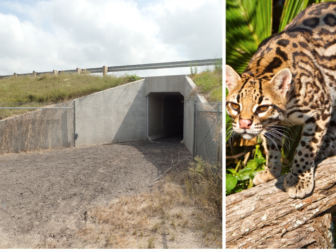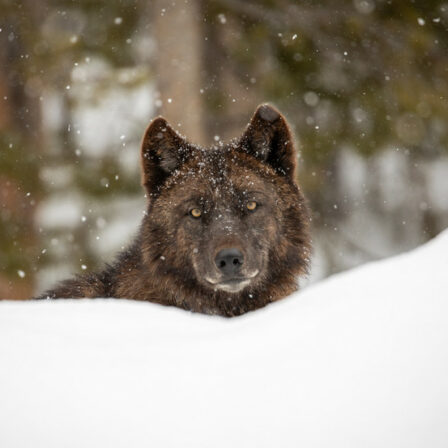As we face the sixth mass extinction and the potential loss of one million species, we must identify solutions to curb the biodiversity crisis. With habitat loss, degradation and fragmentation among the main causes of biodiversity loss, reconnecting habitat has to be at the top of our list. One way to do that is through the creation of wildlife corridors, stretches of wildlife habitat connecting two or more areas of wildlife habitat to promote essential movement for a diverse array of species. A second way is through the construction of wildlife crossings including bridges, tunnels, overpasses, underpasses, and culverts that are inspired by nature and allow wildlife to cross highways and roads safely, avoiding vehicle collisions. Together these initiatives can make a big difference for wildlife.

Unlike humans, wildlife do not have everything they need in one place. Instead, they move for a variety of reasons including to find food, refuge, new habitat, and mates. For example, Wyoming’s pronghorn trek south every winter across 150 demanding miles to reach feeding grounds not available up north. Monarch butterflies also travel long distances, flying 2,500 miles each fall from Northeastern United States and Canada to Southern California and Mexico to escape the winter weather. Although they don’t migrate, Florida panthers still do their fair share of moving, particularly when it comes time for dispersal, the stage at which they leave home to establish their own habitat range.
Unfortunately, due to human encroachment, these species are unable to make their migrations or reach suitable habitat. Pronghorn are confronted by roads, fences and cities; monarchs aren’t able to find enough milkweed to make their journey; and Florida panthers are losing their lives to highway traffic. These are not the only species affected by habitat loss and fragmentation. Others include grizzly bears, black bears, frogs, salmon, salamanders, birds, wolves, and foxes, to name a few. These are not problems reserved only for animals, plants too have been negatively impacted by humans.
Fortunately, wildlife corridors and crossings have the ability to alleviate these problems and promote the survival of species on the brink of extinction. By adding them to the landscape, species can make their annual migrations, expand their range, and avoid conflict with humans. In addition, wildlife corridors and crossings are able to increase biodiversity, improve resiliency, encourage genetic diversity, and enhance climate change adaptation.
At the national level, we are on our way to establishing wildlife corridors and crossings through the Wildlife Corridors Conservation Act. This legislation, introduced last year by Senator Tom Udall and Representatives Don Beyer and Vern Buchanan, will designate national wildlife corridors on federal public lands, provide funding for states, tribes, and private landowners to support corridor projects on their land, and produce a National Wildlife Corridors Database to improve corridor decisions by using evidence-based methods. Together these measures will give wildlife a fighting chance during these difficult times.

Similar work is happening at the state level in Colorado and Pennsylvania. In the Rocky Mountain State, we are working closely with volunteers, organizations and state legislators on policies to strengthen habitat connectivity for endangered species. In 2019, Governor Jared Polis signed the Executive Order, “Conserving Colorado’s Big Game Winter Range and Migration Corridors.” Building off this incredible momentum, we are working to ensure that legislation includes wildlife corridors and crossings for endangered species, and that it remains a priority in the state for decades to come. In the Keystone State, with the help of many volunteers and organizations, we are working to pass a resolution creating a study to identify where and how corridors can most benefit people and wildlife. We are grateful to Representative Mary Jo Daley for sponsoring HR 670 and are excited to continue working with her to move it forward.
With your support we can reestablish wildlife habitat and increase biodiversity.


